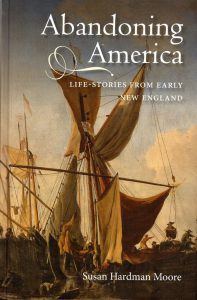 Sir Richard Saltonstall came to New England with the Winthrop Fleet in 1630. He left in 1631. His oldest son, Richard Saltonstall, also returned to England in 1631, where he got married in 1633 and then brought his wife and their nine-month-old daughter back to New England. The younger Saltonstall was active, sometimes controversially, in the Massachusetts government and travelled back and forth between the colonies and old England over the next six decades. In 1643 he took his wife, Muriel, and all of his daughters home to England for the benefit of her health (which apparently was affected by a deep distaste for the New World), leaving only his youngest son Nathaniel to settle permanently in Massachusetts. After more trips back and forth, Richard returned to England for good in 1688. “Richard never really became a New Englander.” Continue reading Abandoning America
Sir Richard Saltonstall came to New England with the Winthrop Fleet in 1630. He left in 1631. His oldest son, Richard Saltonstall, also returned to England in 1631, where he got married in 1633 and then brought his wife and their nine-month-old daughter back to New England. The younger Saltonstall was active, sometimes controversially, in the Massachusetts government and travelled back and forth between the colonies and old England over the next six decades. In 1643 he took his wife, Muriel, and all of his daughters home to England for the benefit of her health (which apparently was affected by a deep distaste for the New World), leaving only his youngest son Nathaniel to settle permanently in Massachusetts. After more trips back and forth, Richard returned to England for good in 1688. “Richard never really became a New Englander.” Continue reading Abandoning America
Tag Archives: Research tips
Revolutionary privateering

In attempting to prove Revolutionary War service for a man from Norwich, Connecticut, who did not show up in any militia lists, pension records, war memorials, etc., I turned to the subject of privateering. According to the DAR Genealogy Guidelines, “privateers were privately owned, armed trading vessels, commissioned or issued letters of marque from either the Continental Congress or from individual provisional government[s] (sometimes by both) to capture enemy ships and goods. The bounty or prize was divided by the officers and seamen and the governing body that authorized the privateering. Bounties made privateering very profitable and provided much needed supplies to the American forces. The Continental Congress officially authorized privateering for the war on 23 March 1776, although some states had already initiated privateering prior to that date.”
Norwich, located at the head of the Thames River, was a center for ship-building; the largest shipping firm in Norwich was Howland & Coit. Vessels traveled down the river and then sailed from New London harbor. Continue reading Revolutionary privateering
As is
 Genealogists spend a lot of time correcting published genealogical works, which is especially ironic when it comes to Clarence Almon Torrey’s New England Marriages Prior to 1700, published by NEHGS and the work upon which the Early New England Families Study Project is based.
Genealogists spend a lot of time correcting published genealogical works, which is especially ironic when it comes to Clarence Almon Torrey’s New England Marriages Prior to 1700, published by NEHGS and the work upon which the Early New England Families Study Project is based.
We have constant inquiries about, and requests to fix, typographical mistakes and transcription errors in the Torrey database on AmericanAncestors.org, which is not really a “database” but an index to the images from the three-volume print publication, also published by NEHGS. Continue reading As is
ICYMI: Consider the siblings
[Editor’s note: This blog post originally appeared in Vita Brevis on 27 November 2015.]
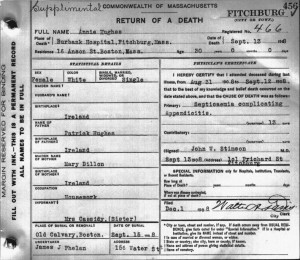 For the last several months, I have been trying to determine the origins of each of my mother’s Irish ancestors. In a previous post, I mentioned my success in locating the origins of my Kenefick ancestors; however, I have been having trouble with some ancestors with much more common surnames.
For the last several months, I have been trying to determine the origins of each of my mother’s Irish ancestors. In a previous post, I mentioned my success in locating the origins of my Kenefick ancestors; however, I have been having trouble with some ancestors with much more common surnames.
The earliest record I have for my maternal great-great-grandparents Patrick Cassidy and Mary Hughes is their marriage record, dated in Boston 28 November 1888. Continue reading ICYMI: Consider the siblings
Daughtered out
 In a patronymic culture we put emphasis on surnames that are passed from son to grandson. This is mostly a matter of habit, because tracing a genealogy of descendants by their surname is usually much easier than tracing descendants through female lines where the family names keep changing every generation.
In a patronymic culture we put emphasis on surnames that are passed from son to grandson. This is mostly a matter of habit, because tracing a genealogy of descendants by their surname is usually much easier than tracing descendants through female lines where the family names keep changing every generation.
I’ve never been politically active – Women’s Lib came along a few years too late for me; I was already out of college and missed the movement, although I embraced “most” of the ideas – but lately I’ve been thinking more about how we all still, out of habit, approach genealogical research and publication mostly by surnames. Continue reading Daughtered out
ICYMI: Family plots: Part Two
[Author’s note: This blog post originally appeared in Vita Brevis on 19 October 2015.]
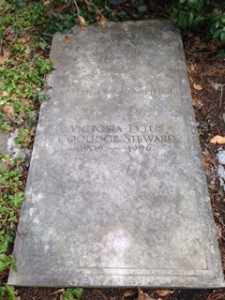 Riffing on something Chris Child wrote about collecting photos of family members in July, I thought I might do something similar with information about family burial plots. Such an exercise leans heavily on Findagrave.com (where some of the images may be found), although in my case I also have the notes compiled by my great-aunt Margaret Steward in 1966 as a resource for my research.
Riffing on something Chris Child wrote about collecting photos of family members in July, I thought I might do something similar with information about family burial plots. Such an exercise leans heavily on Findagrave.com (where some of the images may be found), although in my case I also have the notes compiled by my great-aunt Margaret Steward in 1966 as a resource for my research.
My grandparents are easy: my father’s parents (and stepmother) are buried at Hamilton Cemetery in Massachusetts, while my mother’s parents (and stepmother) are buried at Arlington National Cemetery in Virginia. I was present for my paternal grandfather’s memorial service in 1991, my maternal grandfather’s burial in 1994, and for my paternal step-grandmother’s memorial service in 1996. Continue reading ICYMI: Family plots: Part Two
A variety of faiths
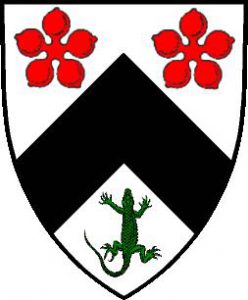
I was very excited about our recent announcement that AmericanAncestors.org is digitizing the parish records of the Archdiocese of Boston. I had viewed some of these records in the past at their offices in Braintree. Some of the volumes had been in quite fragile shape, and having them digitized, and ultimately indexed, is going to provide greater access to an under-utilized record source.
When the records went online, I decided to browse some of the early volumes. While people with Catholic ancestors in other areas such as Quebec and Latin America can often find mothers’ full maiden names on baptismal records, and mothers’ maiden names for both parties on marriage records, I knew that this is not always the case for New England Catholic records: often the wife/mother is listed only with her husband’s name, without a reference to her maiden name. Continue reading A variety of faiths
Researching family heirlooms
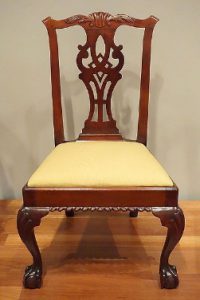
The Research Services team at NEHGS is occasionally approached with questions relating to the history of ownership (i.e. provenance) of a particular family heirloom. These questions are usually supplemented with stories about the heirloom’s first owner and how the object was acquired. Genealogists are uniquely qualified to carry out provenance research due to their familiarity with and frequent use of two sources commonly used in provenance research: wills and estate inventories. However, before consulting any of these sources, a serious study of an heirloom’s provenance should begin by studying the object itself.
To illustrate how the study of an object is crucial to provenance research, consider the following hypothetical scenario: An individual is interested in documenting the ownership of a piece of heirloom furniture (a side chair) that has been in the family for multiple generations. For the purpose of this exercise, let’s say that the chair is similar in form to the image in Fig. 1, and that the chair is not a reproduction. Continue reading Researching family heirlooms
Connecticut probate records
 In my youth I used to make trips to the Connecticut State Archives in Hartford, Connecticut, to access their great collection, particularly the microfilmed probates and deeds. More recently, I have had to settle for Charles William Manwaring’s book, A Digest of the Early Connecticut Probate Records, so I am delighted that the Connecticut probate files are now available on Ancestry.com: “Connecticut, Wills and Probate Records, 1609–1999.” (Don’t ask me what the 1609 refers to!) Since Manwaring’s book only contains brief abstracts from the records, it is good to be able to compare them to the original files – particularly since Manwaring’s abstracts seem to have been made from the copy book versions, rather than the original files, which in some cases contain more than the books. Continue reading Connecticut probate records
In my youth I used to make trips to the Connecticut State Archives in Hartford, Connecticut, to access their great collection, particularly the microfilmed probates and deeds. More recently, I have had to settle for Charles William Manwaring’s book, A Digest of the Early Connecticut Probate Records, so I am delighted that the Connecticut probate files are now available on Ancestry.com: “Connecticut, Wills and Probate Records, 1609–1999.” (Don’t ask me what the 1609 refers to!) Since Manwaring’s book only contains brief abstracts from the records, it is good to be able to compare them to the original files – particularly since Manwaring’s abstracts seem to have been made from the copy book versions, rather than the original files, which in some cases contain more than the books. Continue reading Connecticut probate records
A “wasted” correction
In an earlier blog post about former ancestors, I noted some instances where my modern-day research turned ancestors into “former ancestors,” some quite recently. This one involves a correction I discovered several years ago; while valid, I should really have reviewed these charts more recently, for confirmation. Continue reading A “wasted” correction

